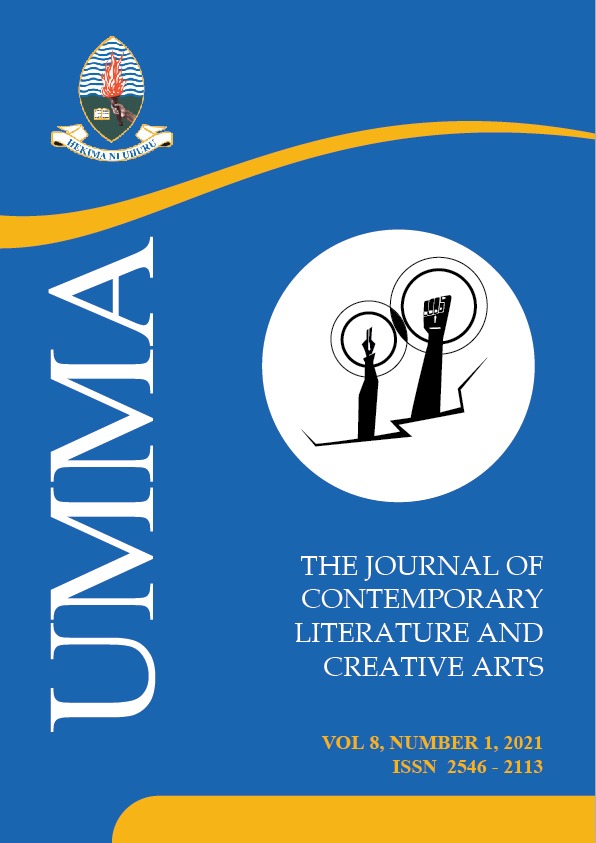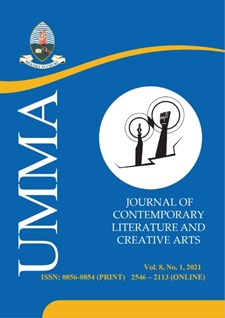African video films: Stereotypes and narrative crumple in the quest for transnationality in Dar 2 Lagos
Abstract
AbstractThis article takes a close-up look at Dar 2 Lagos, a film by Femi Ogedegbe,
focusing on how the film attempts to feature transnational elements in filming
across Africa. The film which demonstrates a new trend in filmmaking practices
in Africa introduces possible multinational collaborations which are likely to offer
opportunities for talents and producers to team-up and utilize not only talents
and stories but also beautiful locations around the continent. However, such
opportunities for the industry to cater for the demand of the audience with stories
that people across the continent share and relate to is haunted by the film ' s
stereotypical representation of women. While I read Dar 2 Lagos as the industry ' s
effort to unite the two emerging film industries in Africa, Nigeria ' s Nollywood
and Tanzania ' s Bongo Movies, I also highlight the way the film segregates
women in the union process. I use a textual analysis to argue that although the
current film practice in Africa attempts to ease border crossing, Dar 2 Lagos
permits only male stories, ideas, narratives, talents and bodies to unrestrictedly
move between African nation-states and beyond. The film ' s narrative denies free
movement of the female bodies and their passions. This stereotypical practice of
the medium perpetuates the past cultural practices and therefore jeopardises a
clear envisioning of the future of film production in Africa.
.
Key words:
Transnationalism, African filmmaking, Women ' s Representation, Future of
African film production
References
References
Bardan, A. (2007). Enter freely, and of your own will: Cinematic representations
of post-socialist transnational journeys. In: Ed. Marciniak, K., A. Imre, &
A. O ' Healy, Transnational feminism in film and media (pp. 93-108). New
York: Palgrave.
Behdad, A. (1998). Border inspection: Reflections on crossing the US border.
Aztlan: Journal of Chicago Studies, 23 (1), 103-113.
Faist, T. (1997). The crucial meso-level. In: Hammar, T. (et al.) (Eds.). International
migration, immobility and development: Multidisciplinary perspectives. NY:
Oxford.
Fortier, A. (2001). ' Coming home ' : Queer migrations and multiple evocations of
home." European Journal of Cultural Studies, 4 (4), 405-425.
Krings, M. (2010). Nollywood goes east: The localization of Nigerian video films
in Tanzania. In: Eds. Austen, R. & M. Saul, Viewing African cinema in the
twenty-first century: art films and the Nollywood video revolution. Ohio: Ohio
University Press.
Mackie, V. (2001). The language of globalization, transnationality and feminism."
International Feminist Journal of Politics, 3 (2), 180-206.
Marciniak, K., Imre, A., & O ' Healy, A. (2007). Introduction: Mapping
transnational feminism in film and media studies. In: Eds. Marciniak, K.,
A. Imre, & A. O ' Healy, Transnational feminism in film and media. (pp. 1-18).
New York: Palgrave..
Okwori, J. D. (2003). A dramatized society: Representing rituals of human
sacrifice as efficacious action in Nigerian home-video movies. Journal of
African Cultural Studies, 16(1), 7-23.
Pieterse, J. (2004). Globalization and Culture: Global Mélange. NY: Rowman &
Littlefield.
Shohat, E. & Stam, R. (1994). Unthinking eurocentricism. New York: Routledge.
Stam, R. & Spence, L. (2004). Colonialism, racism and representation: An
introduction. In: Eds. Braudy, L. and M. Cohen, Film Theory and Criticism..
(pp. 887-926). New York: Oxford
Downloads
Published
Issue
Section
License
- Authors retain copyright and grant the journal right of first publication with the work simultaneously licensed under a Creative Commons Attribution License that allows others to share the work with an acknowledgement of the work's authorship and initial publication in this journal.
- Authors are able to enter into separate, additional contractual arrangements for the non-exclusive distribution of the journal's published version of the work (e.g., post it to an institutional repository or publish it in a book), with an acknowledgement of its initial publication in this journal.
- Authors are permitted and encouraged to post their work online (e.g., in institutional repositories or on their website) prior to and during the submission process, as it can lead to productive exchanges, as well as earlier and greater citation of published work (See The Effect of Open Access).



